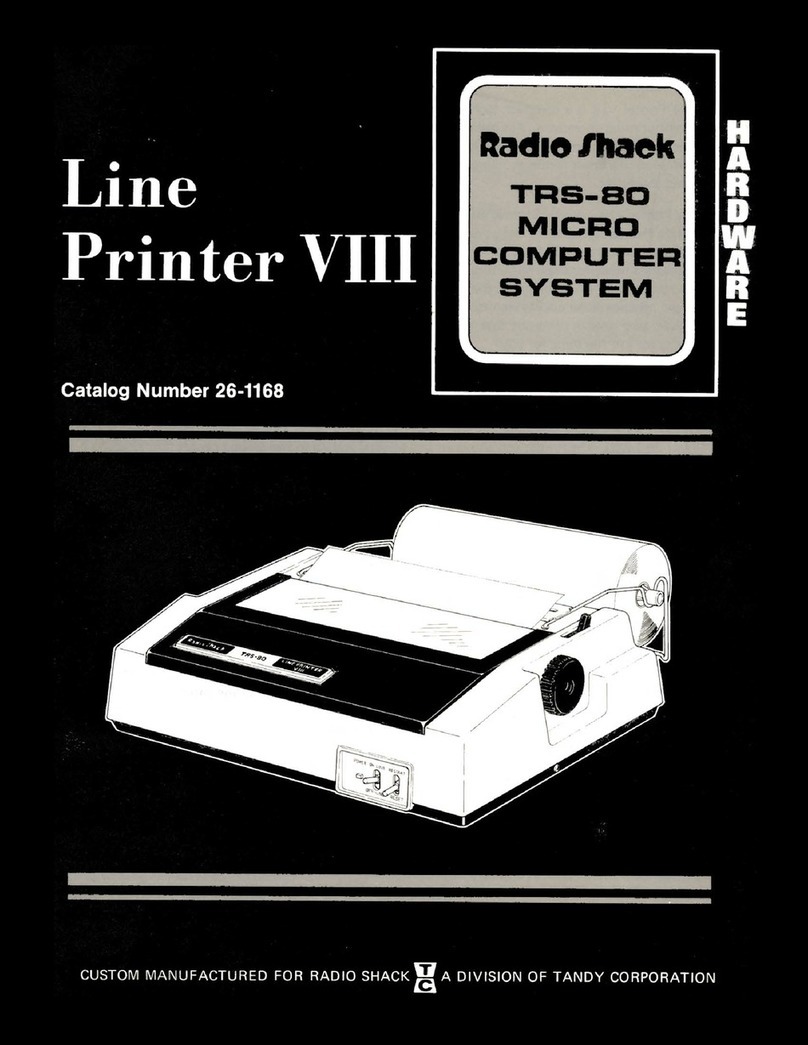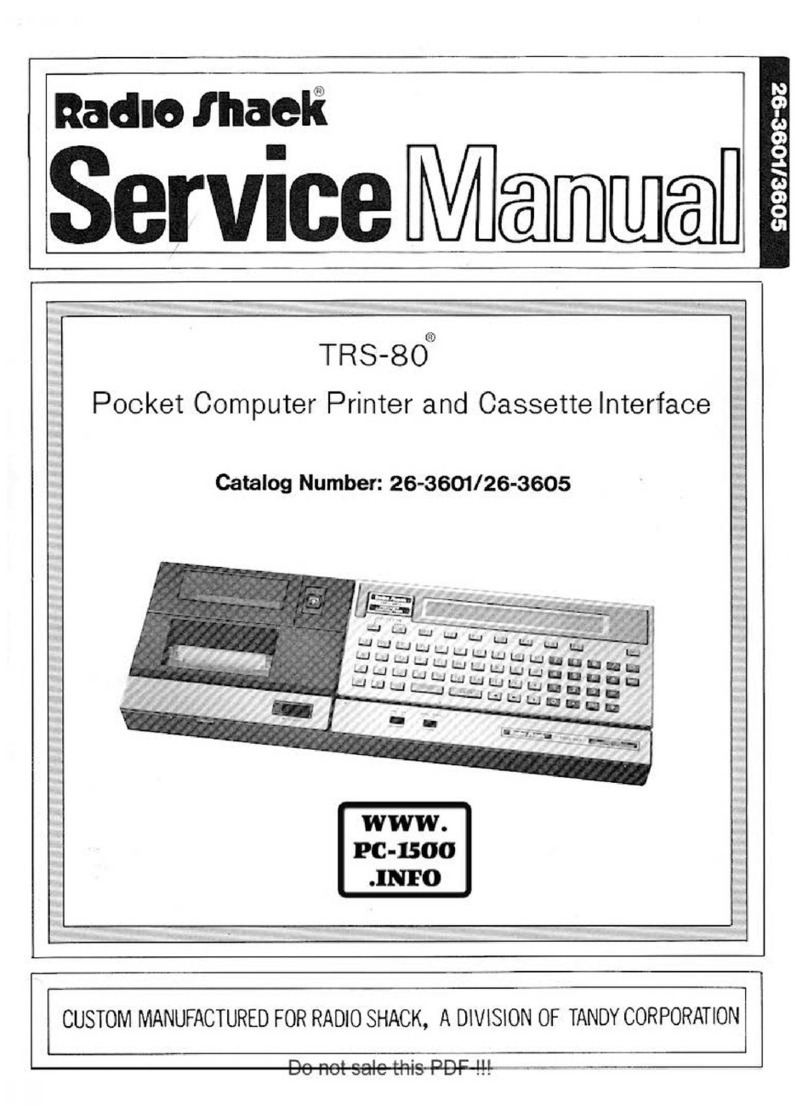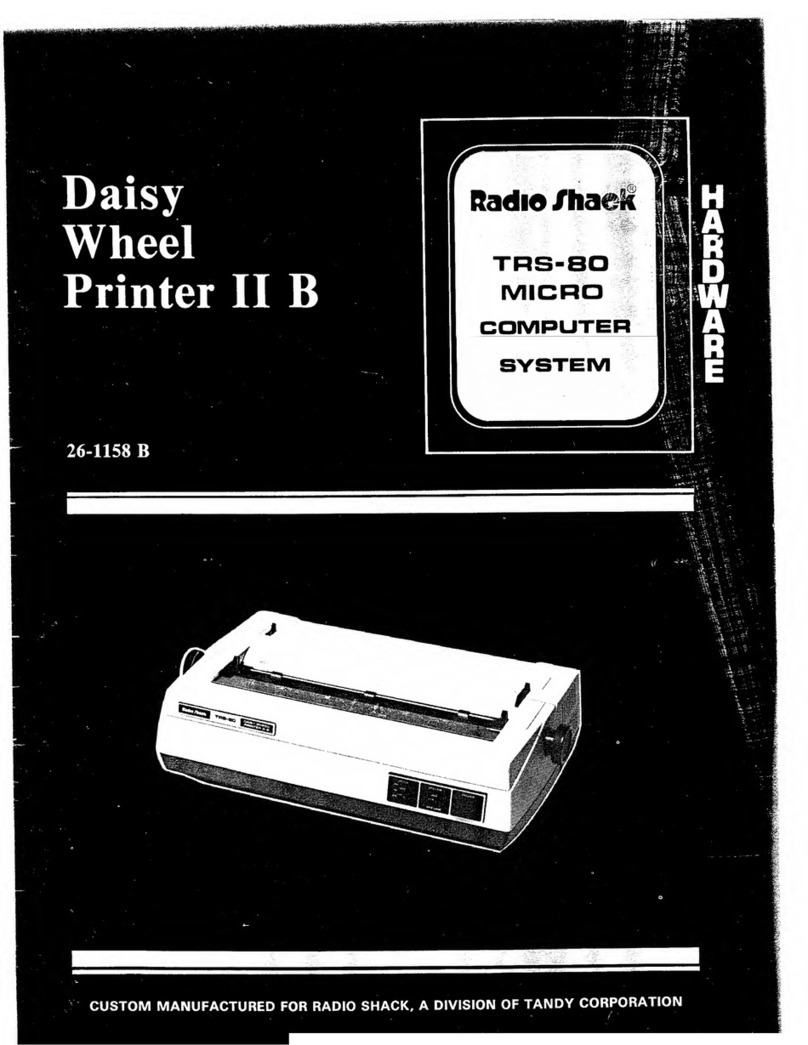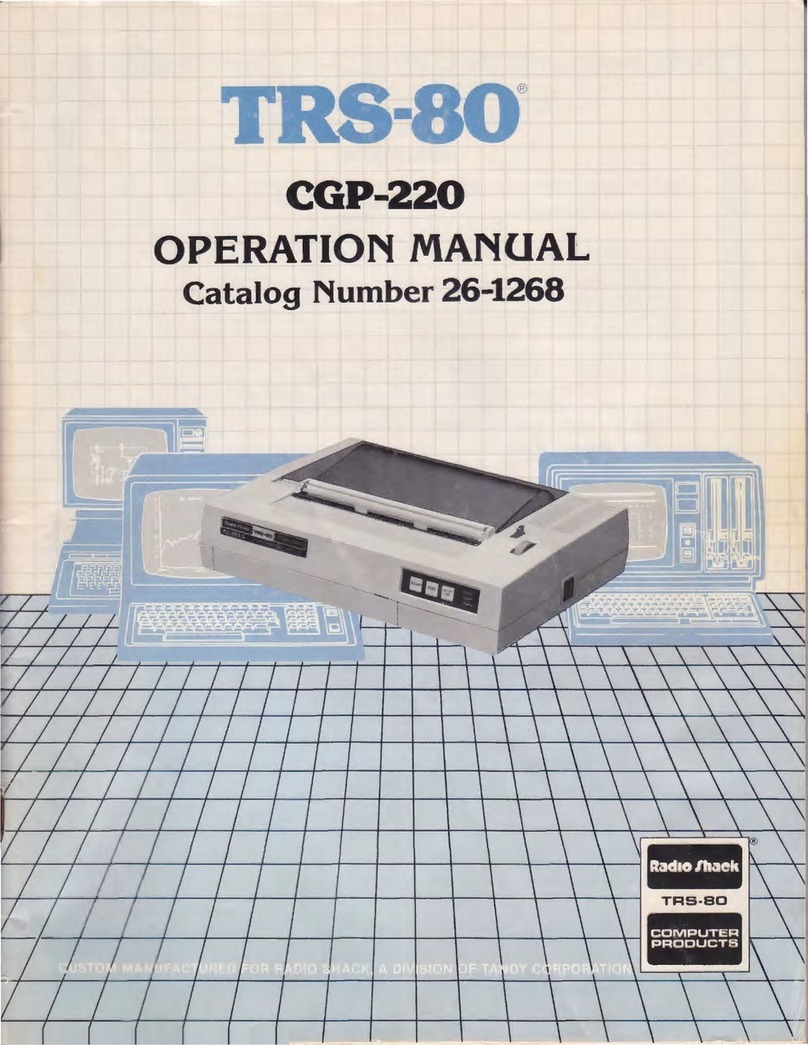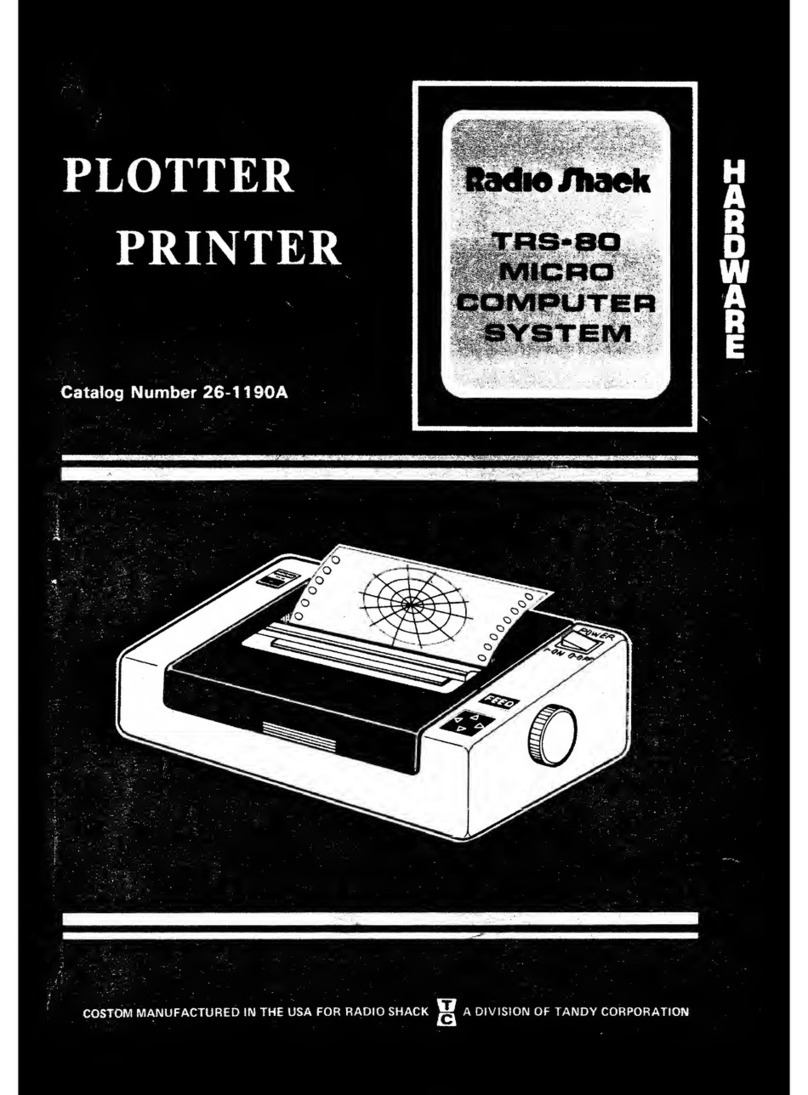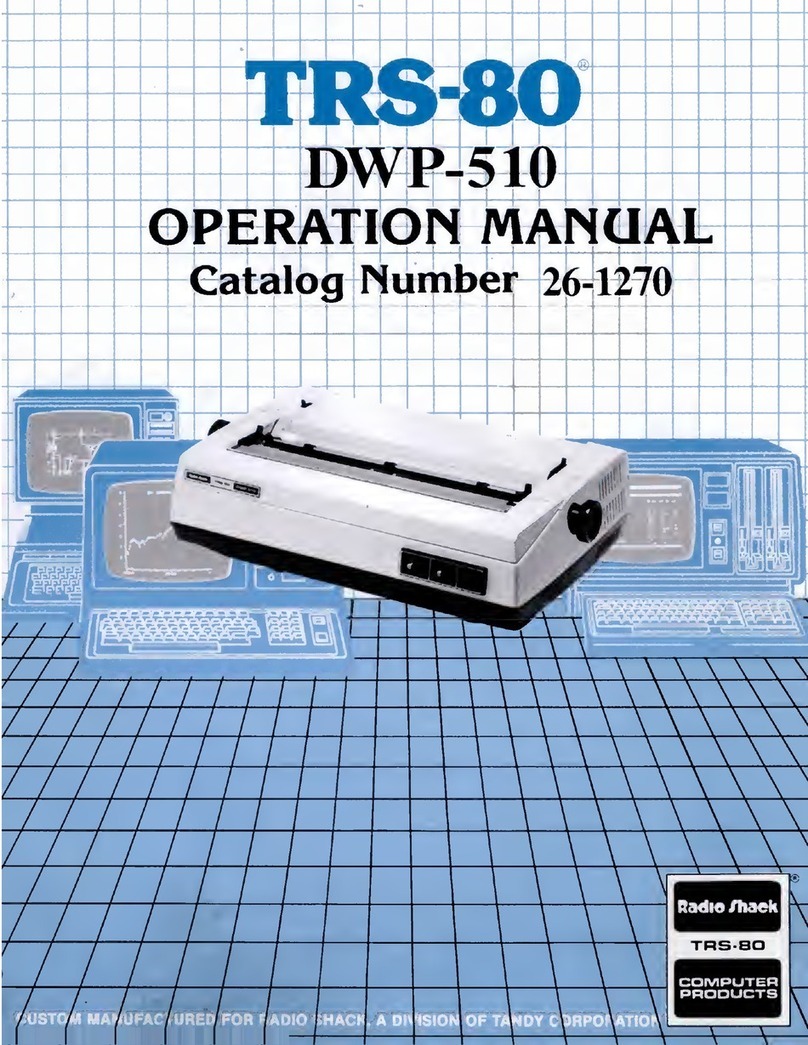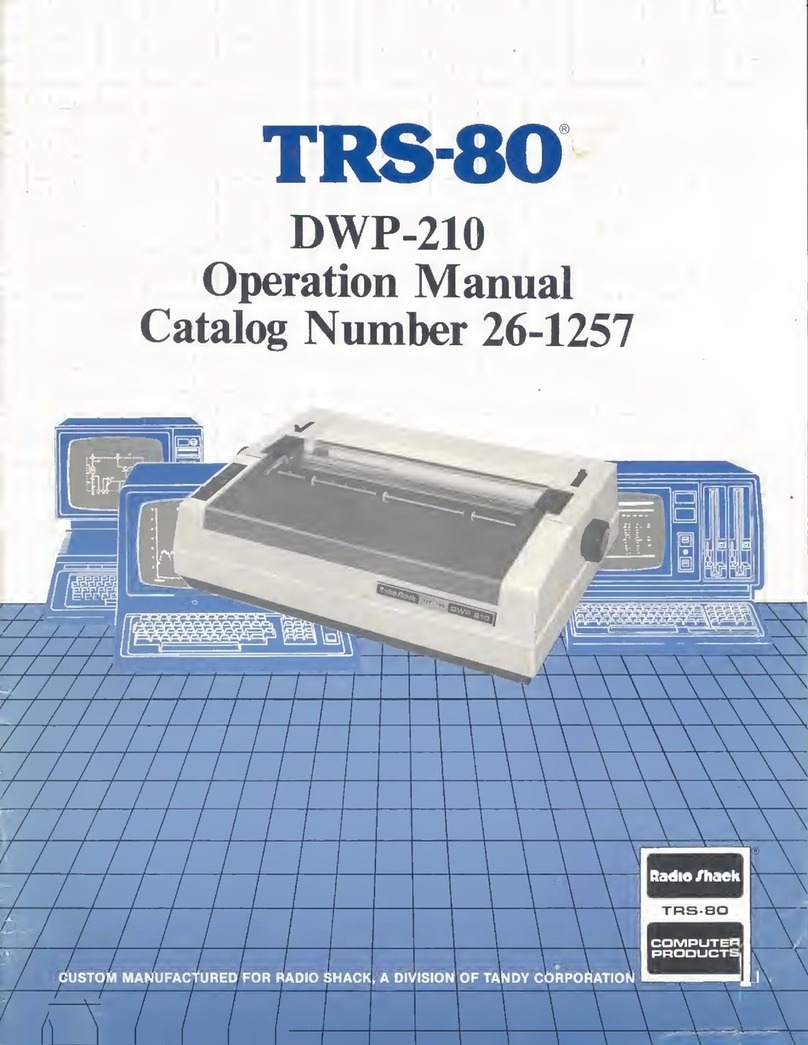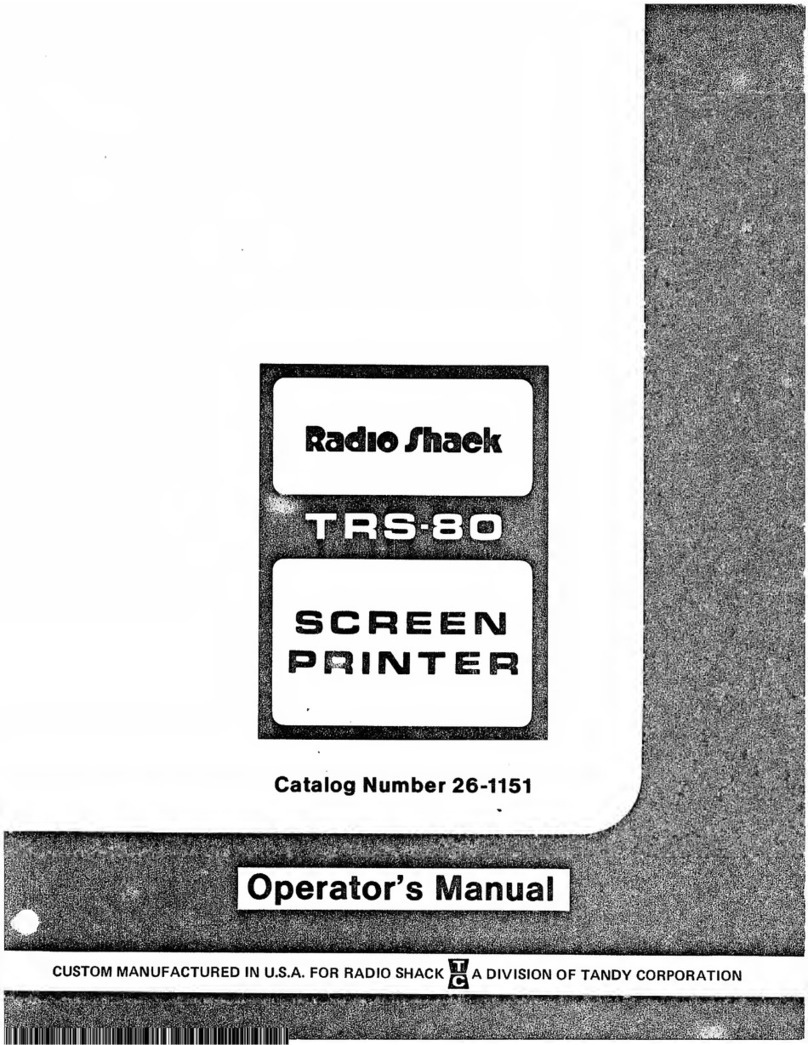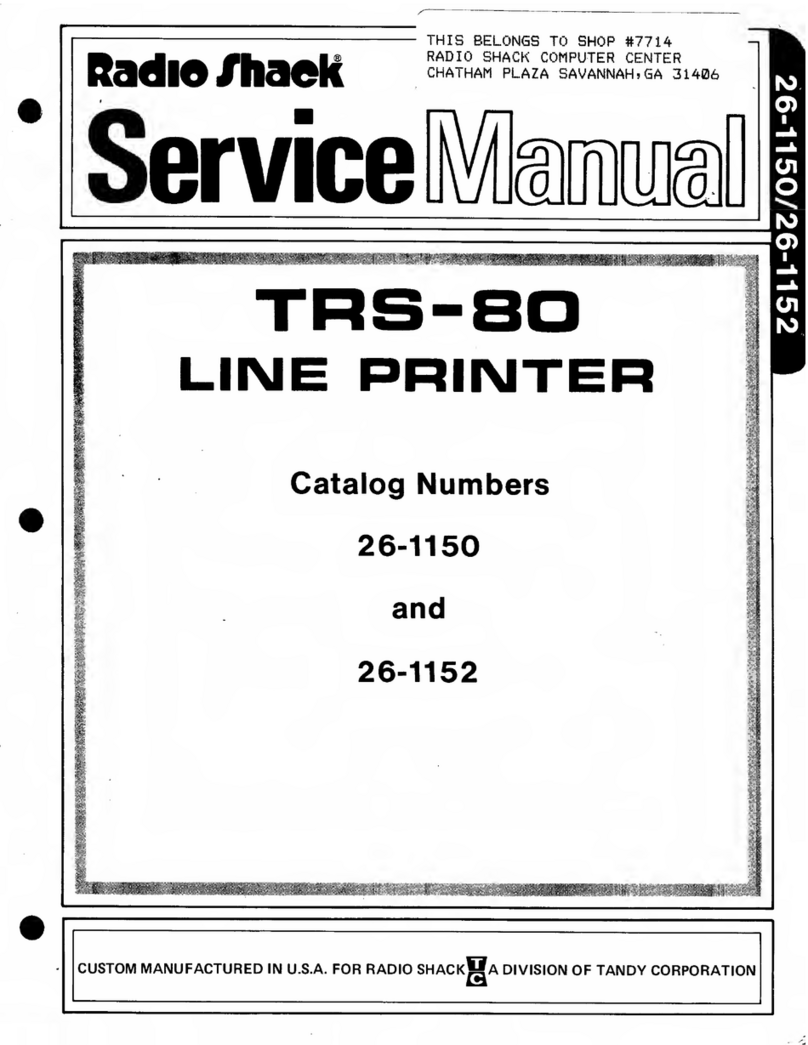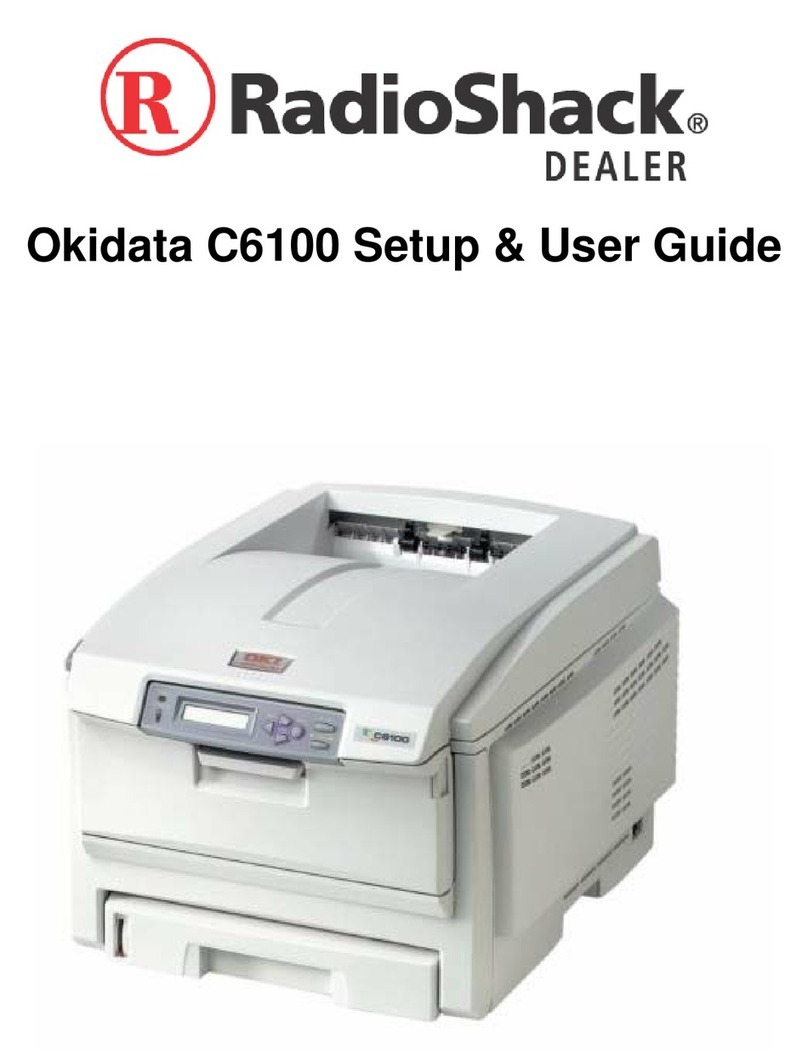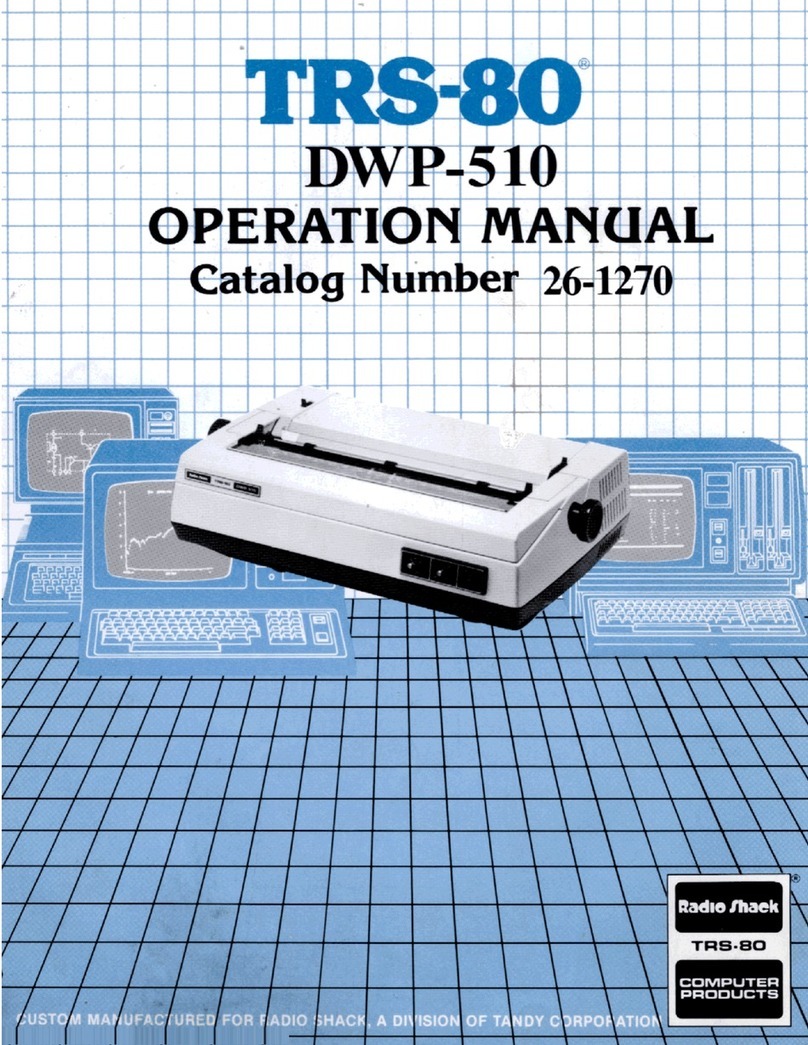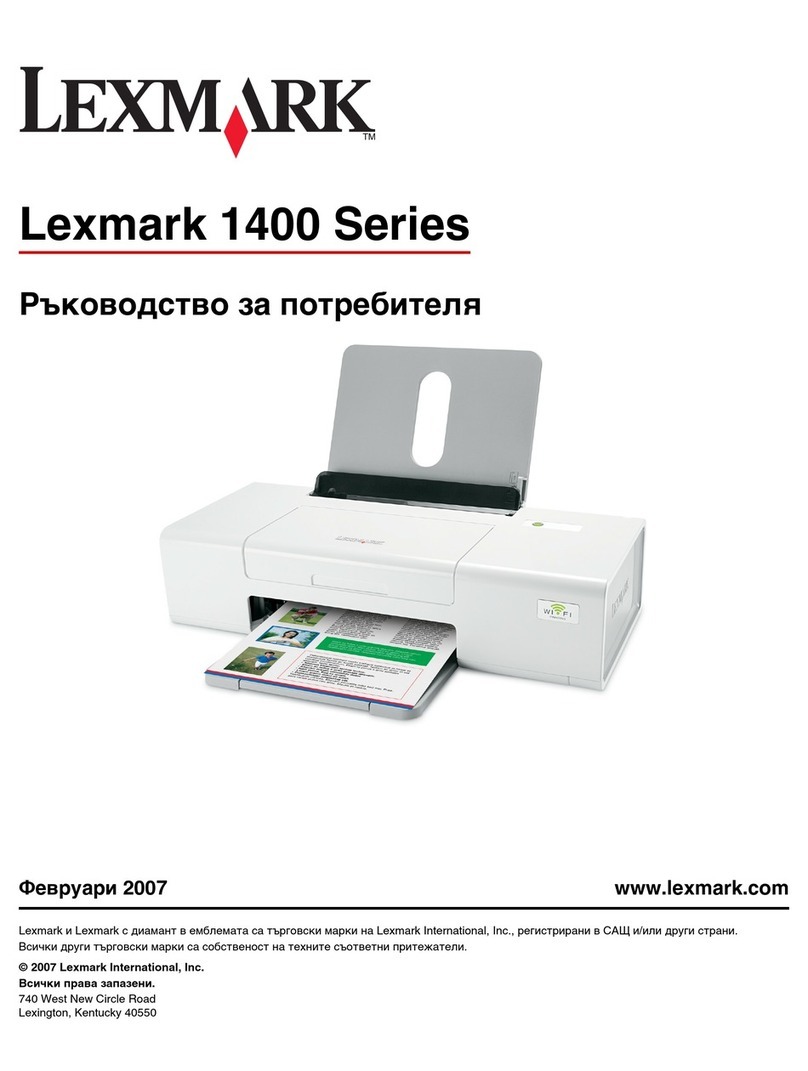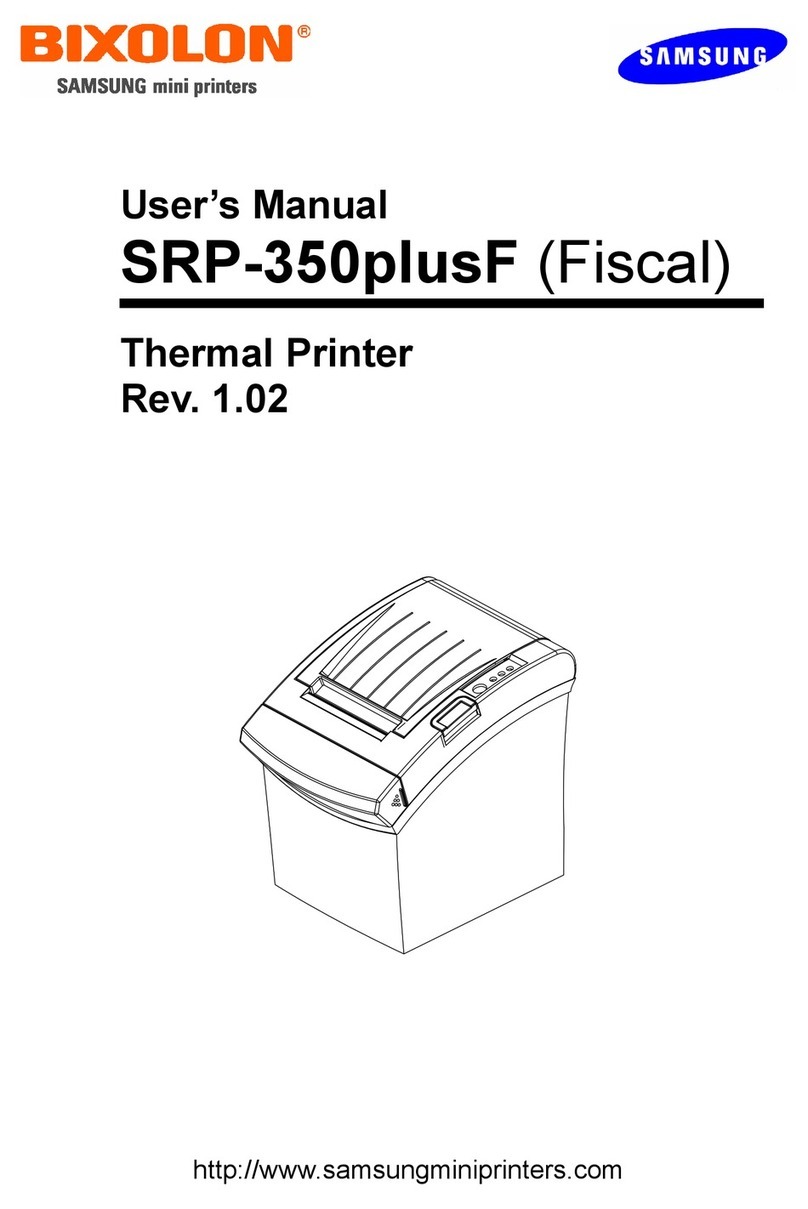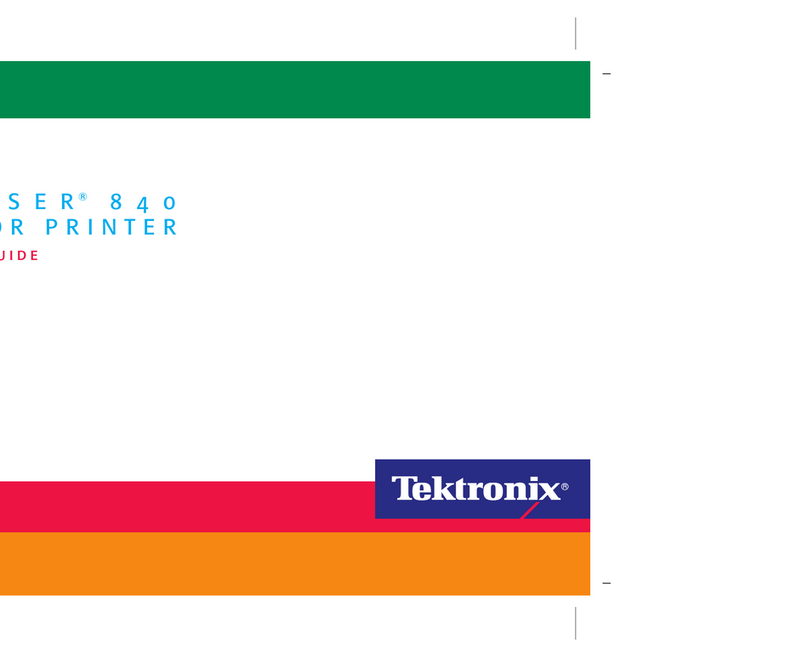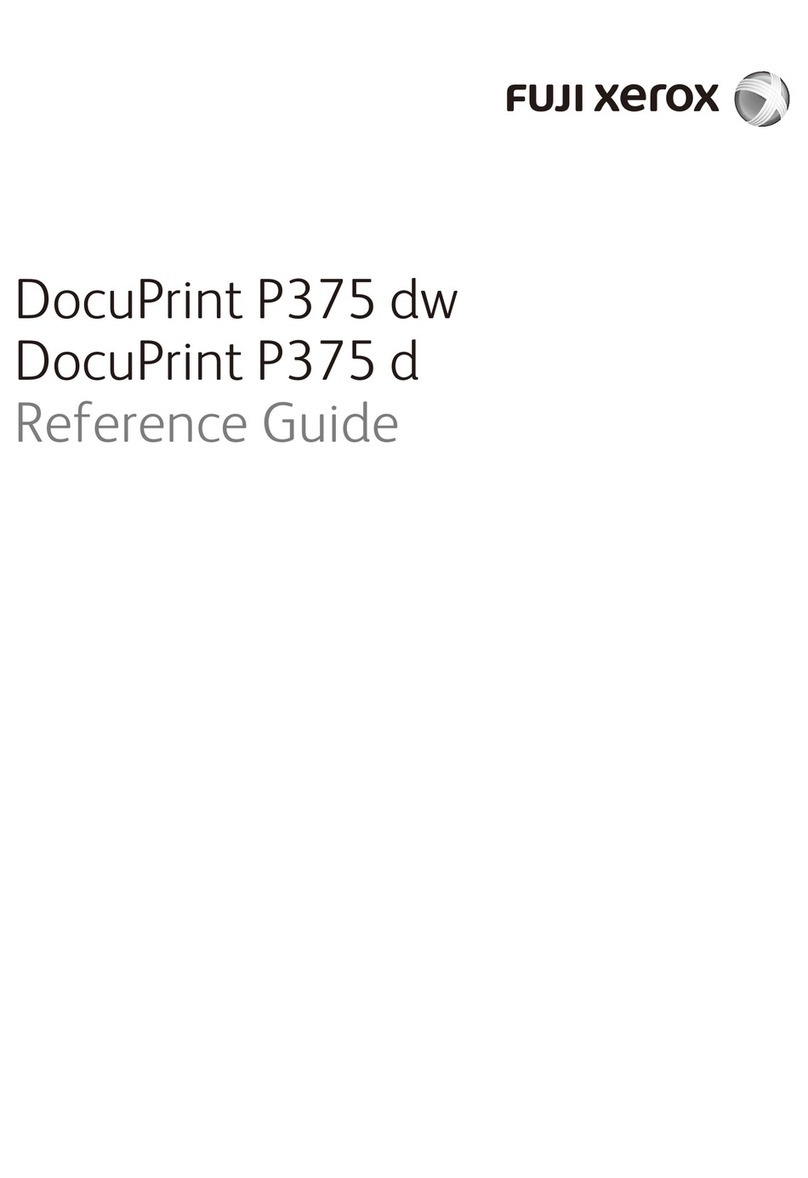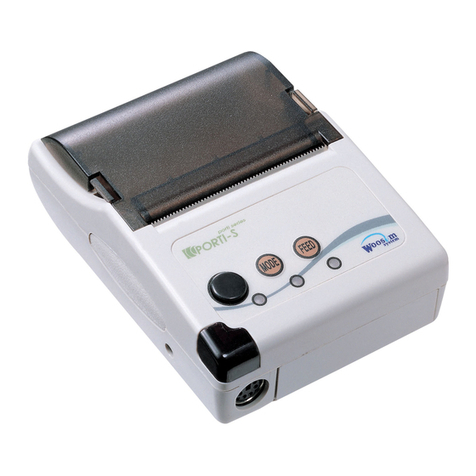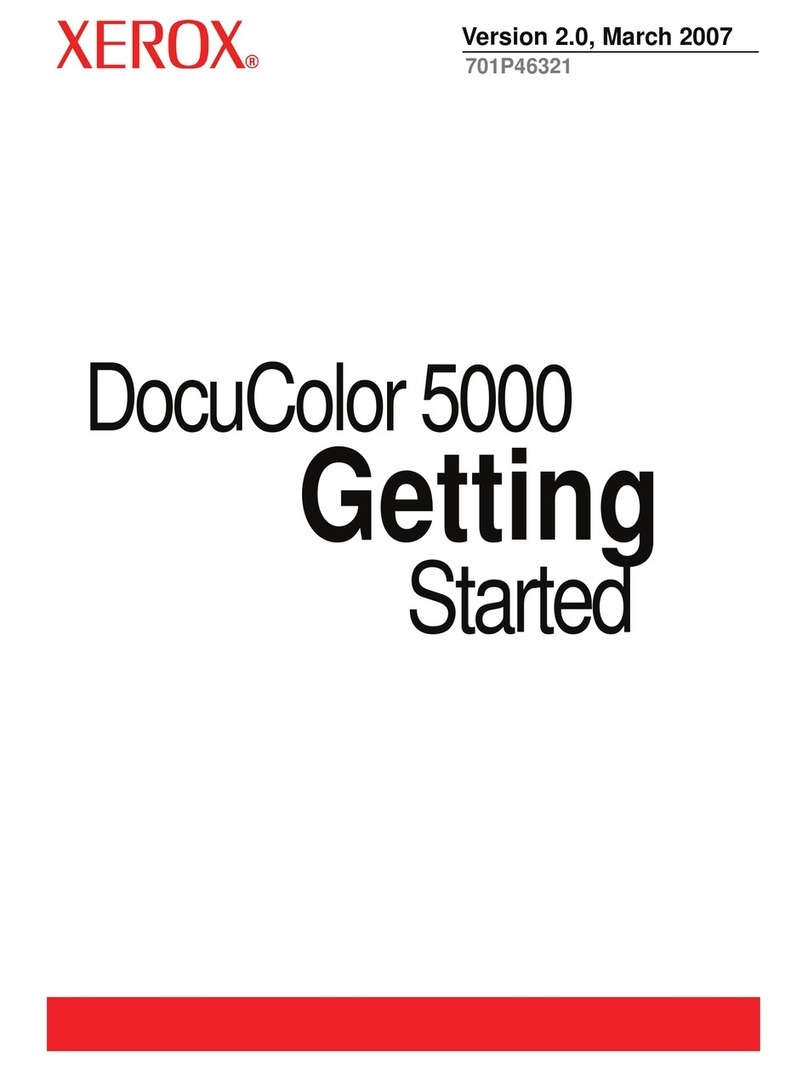1.4 FUNCTIONAL DESCRIPTION
Figure 1-2 is apictorial diagram of the Line Printer II. All of
the logic, control, and power supply circuits are contained on the logic pcb
(printed circuit board) .The printer employs amicroprocessor located on the
logic pcb to control printer operation. Under program control the micro-
processor controls the receiving of input data from the host device, monitors
printer status, initiates and controls movement of the carriage assembly,
controls printing by the print head, and controls paper movement. It monitors
the position of the print head at all times and provides printer status
information to the host device.
The host device transmits 8-bit parallel (ASCII) data and adata
strobe signal to the printer logic pcb. Control of the transmission of data
between the host device and the printer accomplished using the acknowledge
(ACK) ,BUSY, and DEMAND signals. Data transmitted by the host device is
strobed into the logic pcb circuits by the DATA STROBE signal. The printer
responds by sending aBUSY signal to host device indicating printer is opera-
ting on the data. After processing the data the printer sends an acknowledge
signal to the host and the BUSY signal is discontinued. The DEMAND signal is
the inverse of the BUSY signal and when present indicates to the host that the
printer is not busy and can accept data.
The input data applied to the printer consists of character data and
control code data. Character data is stored in an input buffer until the data
is to be printed. Control codes are interpreted as instructions by the
printer and provide the means for host control of the printer.
Input character data is stored in the input buffer until the buffer
is full, or until acarriage return (CR) control code is received. ACR
control code is interpreted as aprint command by the printer. Receipt of a
CR control code by the printer intitiates printing of the contents of the
input buffer. Printing is also initiated when the input buffer becomes
full. In the 10 cpi mode buffer full is 80 characters while in the 16.7 cpi
mode buffer full is 132 characters.
Characters are printed by selectively energizing the print head
solenoids which in turn activate the pins of the print head which are arranged
in acolumn. As the print head is moved across the paper the appropriate pins
are activated driving them against the ribbon paper, and platen to form
characters in a7x7 dot matrix.
The print head is mounted on the carriage assembly. Printing occurs
only when the carriage is moved from left to right. When the printer is
turned on and after printing each line, the print head is moved to the left
side of the printer mechanism. The carriage assembly is driven by areversible
dc motor mounted on the assembly. When aprint command (CR) is received the
motor is energized, the carriage assembly is moved in the forward direction,
and the contents of the input buffer is printed. As the carriage assembly
moves, an encoder wheel (which has magnets imbedded in it) is rotated. The
column sensor (Hall effect device) senses when each of the magnets moves past
it and generates column sense signals which are used to synchronize the
print head solenoids. Upon completion of printing aline of data, the polarity
of the dc voltage applied to the carriage drive motor is reversed and the
carriage assembly is moved to the left side of the printer.
1-4
